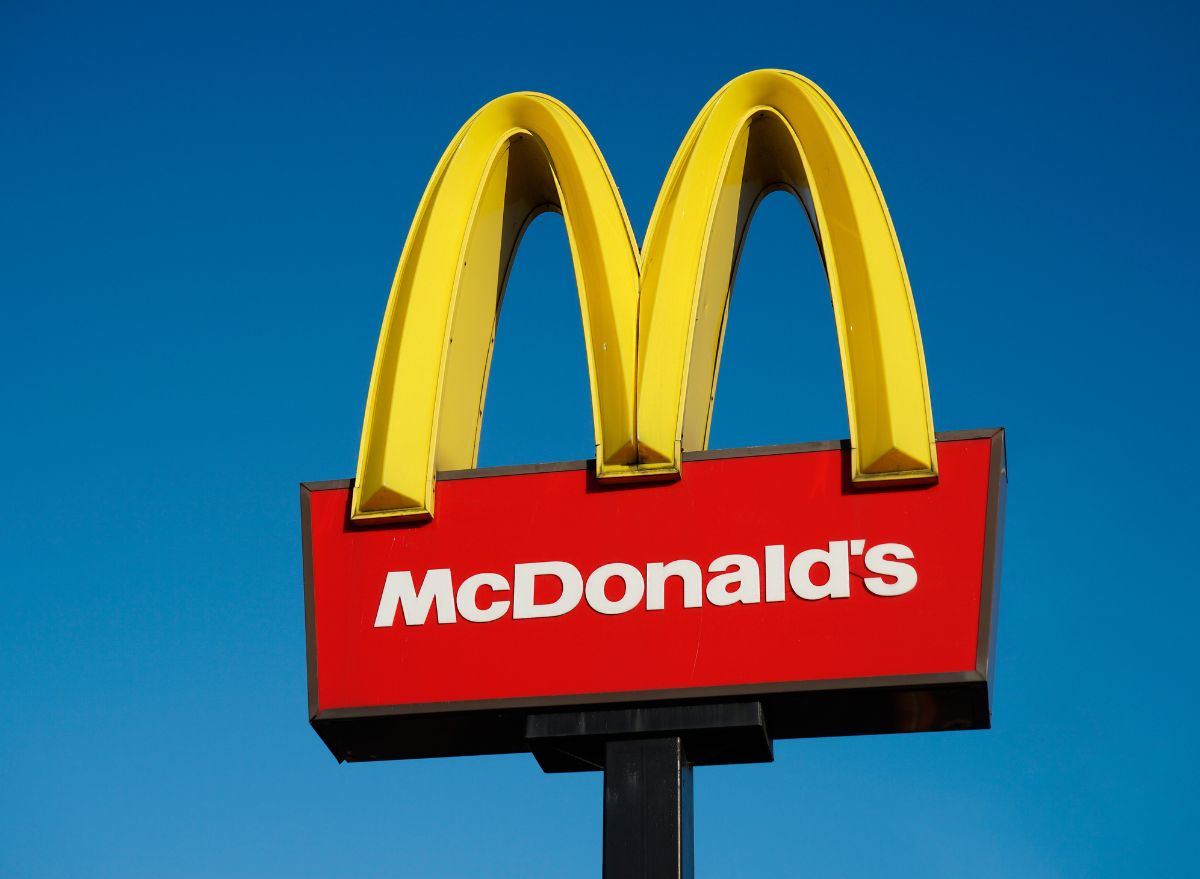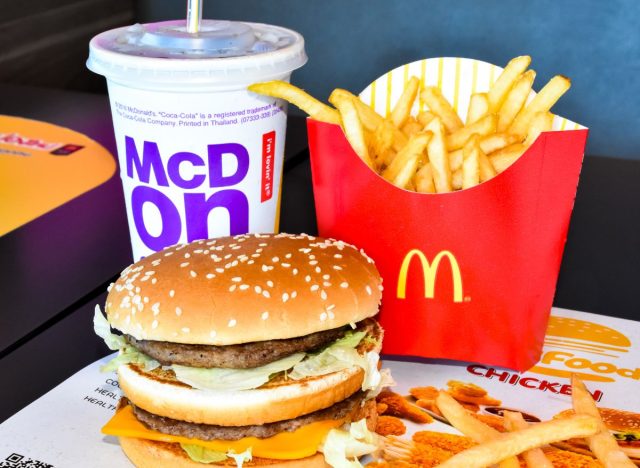McDonald's Insider Reveals 6 Fascinating Secrets About Its Burgers & Fries

McDonald's has some of the most famous fast-food items in the world, but have you ever wondered just how it makes those iconic foods?
Mike Haracz, a former McDonald's corporate chef who frequently shares insider info and tips about the chain on TikTok (@chefmikeharacz), just revealed a handful of secrets about the processes behind McDonald's famous burgers and fries. In two recent videos that have racked up more than 50,000 views, he gave fans the lowdown about the ingredients McDonald's uses for those classic menu items and how it cooks them.
We've compiled all of those fascinating facts Haracz just revealed below, so McDonald's fans can be more well-versed than ever on what they're eating and how it's made.
The burger patties are, in fact, 100% beef.
Haracz got special access to the facilities where McDonald's manufactures its burger patties when he used to work as a corporate chef for the chain. So, he knows exactly what does and doesn't go into the beef patties served to customers throughout the country.
"So here's the secret: it's just beef. It is 100% beef," he shared.
This means absolutely no fillers, additives, or preservatives go into McDonald's burger patties. The chain usually uses trimmings from cuts like the chuck, round, and sirloin when formulating the patties, according to its website.
Not all of the burger patties come frozen.
Depending on which burger you order at McDonald's, you might be biting into a patty that was once frozen, according to Haracz. He said that after the suppliers grind and form the patties for certain burgers—including the Cheeseburger, Hamburger, McDouble, and Big Mac—they'll freeze them and ship them to the restaurants frozen.
Meanwhile, McDonald's has a different process for storing and transporting its Quarter Pounder burger patties, according to Haracz.
"The Quarter Pounder patties are refrigerated. They're packed in a certain manner. I believe they are gas-flushed as well to give them a little extra refrigerated shelf life. And then those are sent to the restaurants."
The burger seasonings are very basic.
McDonald's seasoning for its burger patties isn't some complex spice blend, but two pantry staples. According to both Haracz and the McDonald's site, the burgers are cooked and prepared with just the simple additions of salt and pepper.
"It's just beef, and it's just salt and pepper," Haracz said.
Haracz debunked suspicions that McDonald's fries are blended into a paste and then cut up into fry shapes. Instead, he said the chain uses whole potatoes and prefers varieties like the Russet Burbank that can yield nice, long fries.
Plant workers will wash, steam, peel, and sort the potatoes, plus they'll trim off any brown spots or areas that don't meet their standards.

The fries are made from real, whole potatoes.
McDonald's burger patties are made from 100% beef, and the famous fries are made from real potatoes, too. In another recent video, Haracz confirmed that McDonald's uses real, whole spuds for its fries rather than blending them into a paste and cutting it into fry shapes.
He also noted that McDonald's prefers potato varieties like the Russet Burbank that can yield nice, long fries. Plant workers will wash, steam, peel, and sort the potatoes, plus they'll trim off any brown spots or areas that don't meet their standards.
Cutting the potatoes involves a cannon.
One of the most striking secrets that Haracz revealed about McDonald's fries is that the cutting and sorting process involves shooting potatoes out of a cannon. He said the spuds are shot at "ridiculously high speeds" through a pipe-like contraption that cuts the potatoes into fry shapes.
Afterward, the cut potatoes are also "shot into the air" and inspected for any imperfections, Haracz added. A little burst of air will shoot any fries with imperfections out of the way, while the rest will continue along in the process.
Cooking fries is a multi-step process.
Frying is the most basic method for preparing fries, but at McDonald's, cooking those golden spuds requires multiple steps.
After they're cut and sorted, the fries are blanched in water, dried, par-fried, cooled, frozen, and then shipped off the the actual restaurants. There, they'll get another bath in the deep fryer and a light dusting of salt before they're ready to eat.









